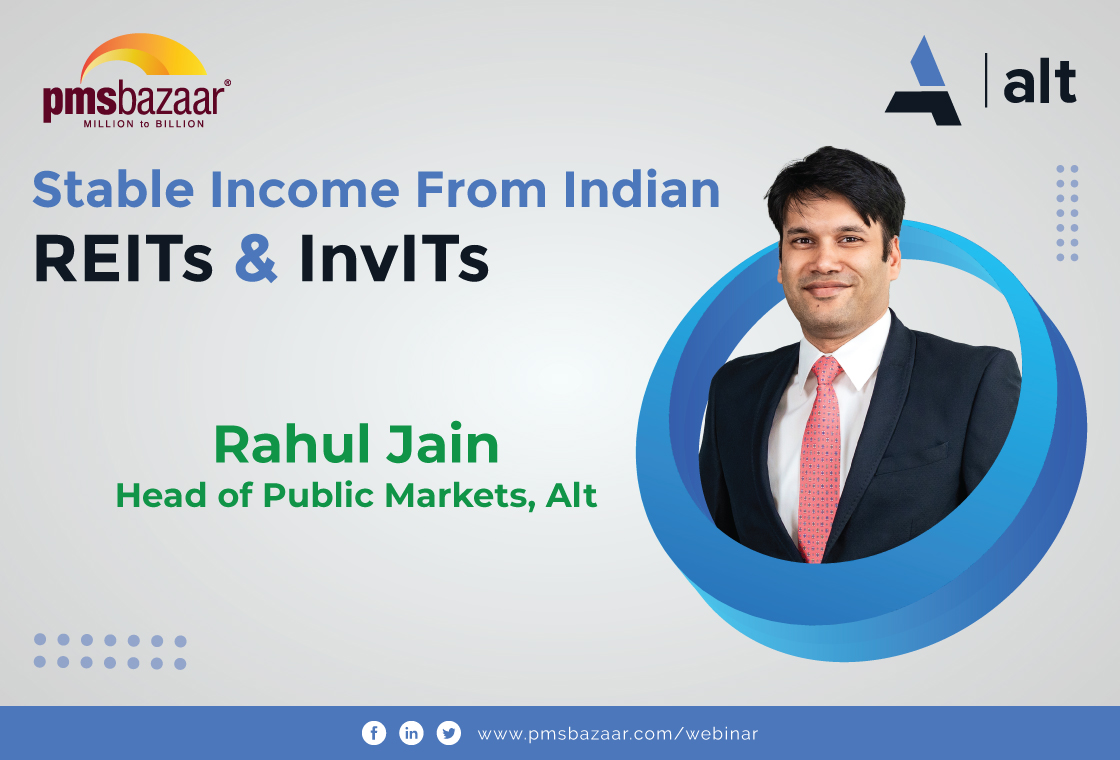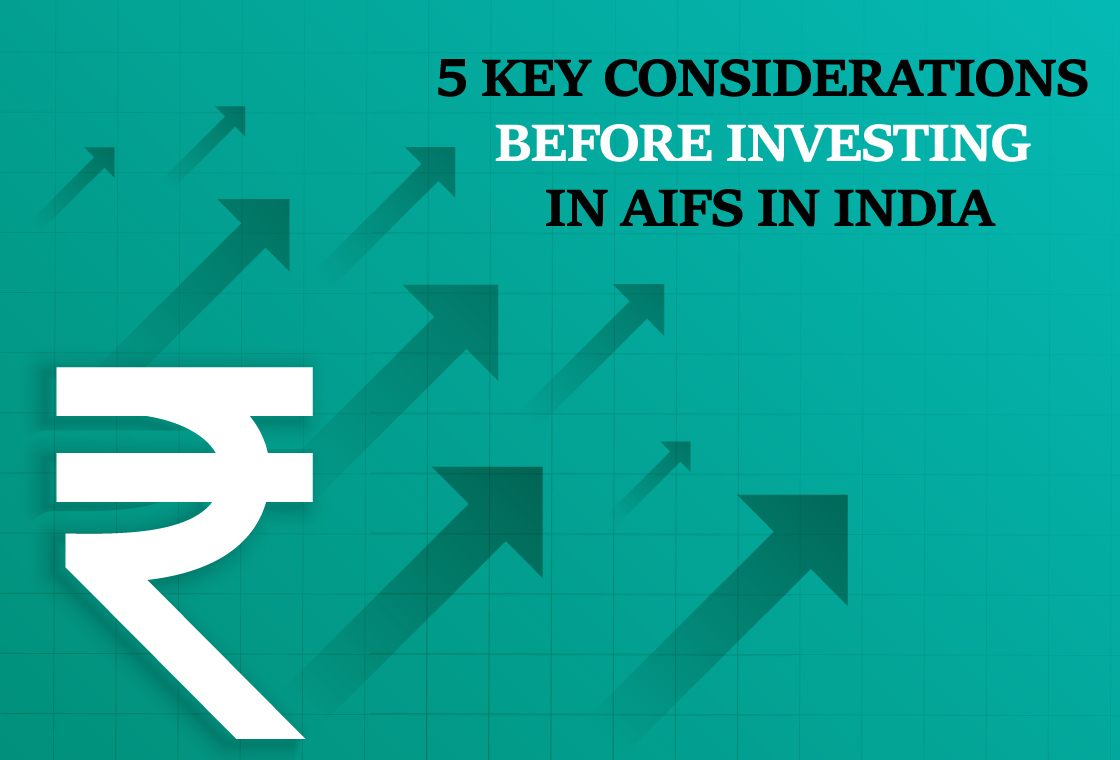PMS Bazaar recently organized a webinar titled “Investing in the Era of Trade Wars,” which featured Mr. Amit Doshi, Co-Founder and Investment Director, Care Portfolio Managers.

The webinar blog covers insights from Mr. Amit Doshi, which included expert insights on trade wars and their implications. It covers historical trade wars, the rationale behind Tariff 2.0, impacts on global trade and inflation, India’s export dynamics, sector-wise opportunities and risks, and strategic investment approaches. He emphasised cautious investing, domestic focus, and the importance of portfolio realignment in a volatile global landscape.
Key aspects covered in this webinar blog are
- Historical lessons from past trade wars
- The genesis of tariff 2.0
- Analyzing the US trade deficit
- Likely impacts of the tariffs
- India in the Trade War and its Export Landscape
- Key sectors contributing to India’s exports
- India’s competitive advantages in a changing global environment
- Sector-wise impact
Summary: Mr. Amit Doshi discussed the relevance of investing amid trade wars, highlighting historical tariffs and their economic impacts. He explained the genesis of "Tariff 2.0," focusing on the US trade deficit and its global ripple effects, including inflation, supply chain shifts, and retaliatory tariffs. India’s exports, especially to the US, were analysed sector-wise, identifying pressure points and resilient areas. He recommended focusing on domestic-oriented and low-impact sectors, suggesting stock-specific strategies while closely monitoring government policies and global trade dynamics.
He acknowledged the high level of participation despite a long weekend, underlining the relevance of the topic—investing in the era of trade wars. He clarified early on that any company names mentioned were purely for academic discussion and not investment advice.
Historical Lessons from Past Trade Wars
He underscored the importance of history, noting that while it may not repeat, it often rhymes. He cited four key trade wars as reference points:
- 1930s Smoot-Hawley Tariff: Intended to protect U.S. farmers but expanded broadly, triggering retaliation from countries like Canada and France. U.S. exports fell 61% by 1933, worsening the Great Depression; trade normalized after 1934 agreements.
- 1960s Chicken War: Europe taxed U.S. chicken; the U.S. retaliated. Most tariffs ended, but a 25% tax on trucks remains, impacting automakers and driving U.S. innovation.
- 2002 Steel Tariffs: Imposed to protect U.S. steelmakers but hurt small firms and reduced European demand. Tariffs were repealed under international pressure.
- 2018 Trump Tariffs:Targeted 800+ Chinese goods; China’s retaliation disrupted supply chains. Although some measures evolved, the trade war’s effects persist.
The Genesis of Tariff 2.0
Mr. Doshi explained that "Tariff 2.0" was primarily driven by the substantial US trade deficit, with Trump's goal being to stimulate domestic manufacturing and attract investments. Trump believed securing numerous investment commitments would help achieve this, and initially proposed a 10% base tariff on all imports from around 60 countries—though this plan was largely reversed. Mr. Doshi noted that while a different tariff methodology had been employed earlier, it remained relevant even with the current pause. He outlined that China, the EU, and Vietnam together accounted for over 55% of the US trade deficit, while India, contributing less than 4%, was initially targeted with a 26% tariff. He also clarified that Trump’s so-called “reciprocal tariff” was not truly based on matching foreign tariffs, but rather calculated as the trade deficit divided by total imports, halved—essentially a formula to address imbalances rather than mirror existing duties.
Likely Impacts of the Tariffs
He outlined several potential consequences of the proposed tariffs. First, he noted that global trade and GDP could each decline by 1.6%, based on estimates, with the underlying risk persisting despite the current pause. Second, he highlighted the likelihood of rising inflation in the US, as higher product prices would likely be passed on to consumers, though the exact distribution across the supply chain remains uncertain. Third, he discussed the impact on commodities and currencies, explaining that a slowdown in global trade could lead to currency volatility and falling commodity prices, trends already visible in metals and crude oil. Finally, he warned of the risk of retaliatory tariffs, citing actions already taken by Canada, the EU, and China, which could escalate trade tensions further.
India in the Trade War and its Export Landscape
Mr. Doshi analyzed India’s position in the global trade scenario, estimating non-oil, non-pharma exports to the US at $74 billion in 2024. A hypothetical 26% tariff combined with a 10–30% demand drop could cause a direct impact of $7–10 billion—just 0.2–0.3% of India’s GDP. However, he warned that indirect effects, such as a global slowdown, could be more severe, influencing $87 billion worth of exports and broader economic activity. He also highlighted risks from currency volatility, particularly rupee depreciation given India’s high import dependency. Presenting India’s export landscape, he emphasized the US’s position as India’s largest export destination, accounting for 18% of total exports, with the UAE following at 8%. At the same time, India’s diversified portfolio—where the top 10 countries contribute only 50% collectively—offers resilience against concentrated external shocks.
Key Sectors Contributing to India’s Exports
India has nurtured a strong export relationship with the United States across multiple sectors. He outlined that the major contributors are:
- Electronics
- Gems & Jewellery
- Pharmaceuticals
- Textiles and Ready-Made Garments
Together, these sectors form a significant chunk of India’s export basket. For instance, textiles alone represent around 12% of India's exports to the US, although they attract the highest import duty, around 10%. Gems and jewellery also carry a similar import duty burden, putting pressure on competitiveness.
India’s Competitive Advantages in a Changing Global Environment
He explained that India stands to benefit from several structural and macroeconomic factors:
- Global Supply Chain Realignment: With US tariffs being imposed across multiple countries and not solely on India, sourcing patterns may shift, offering Indian exporters an edge over competitors such as China and Vietnam.
- Consumption-Led GDP: Unlike some economies heavily reliant on exports, India’s GDP is primarily consumption-driven. Although exports to the USA account for about 18% of India’s total exports, they represent just 12% of the GDP, insulating the economy from external shocks.
- Emerging Cost Competitiveness: In categories like electronics and pharmaceuticals, India’s improved production capabilities and cost competitiveness make it a preferred sourcing destination.
Sector-Wise Impact
He divided sectors into those likely to face pressure and those that appear resilient.
Sectors That May Face Pressure
- IT Services: While not directly impacted by tariffs, the sector could experience slower contract growth due to inflationary pressures in the US. Companies to watch include Infosys, TCS, HCL Tech, and Persistent Systems.
- Gems & Jewellery: Apart from facing a 10% import duty, rising competition from lab-grown diamonds and shifting consumer preferences could dent export volumes. Key players: Renaissance Global, Goldiam.
- Agrochemicals and Specialty Chemicals: Despite India’s 14% share in US imports, price pressures and slowing demand could challenge firms such as PI Industries, UPL, and SRF.
- Auto Ancillaries: Selective pressure is expected. Firms like Bharat Forge and Motherson Sumi could see reduced orders as US manufacturers optimise supply chains.
Sectors That Appear Resilient or Set to Gain
Pharmaceuticals:
Benefitting from zero tariffs and increasing demand, India’s pharmaceutical giants—Cipla, Sun Pharma, and Aurobindo—are well-positioned for growth.
Textiles:
Despite facing a 10% duty, India could benefit from the relatively higher duties imposed on Vietnam and Bangladesh. Key companies include Arvind, KPR Mills, and Trident.
Electronics:
With firms like Apple boosting local manufacturing, India’s electronics exports are projected to rise. Major beneficiaries: Dixon Technologies and Amber Enterprises.
He provided a concise overview of the global economic landscape in light of tariffs.
Global Economic Concerns and Reactions
- US Federal Reserve: He noted the Fed's equal concern regarding tariff-induced persistent inflation, influencing their decision to hold off on rate cuts despite controlled inflation.
- International Monetary Fund (IMF): He mentioned the IMF's suggestion for nations to engage in trade agreements to avert a significant global slowdown.
- Indian Central Bank (RBI): While concerned about GDP growth, the RBI anticipated a limited impact, leading to a slight downward revision of their GDP projection. He highlighted the rupee's depreciation as a more pressing concern for the RBI.
- European Union (EU): The EU had initially retaliated against the tariffs but had since paused, while still expressing disapproval of the tariff strategy.
- Canada: Despite not having a trade deficit with the US, Canada had also implemented retaliatory measures and was prepared for further action.
- China: As the nation with the largest trade deficit with the US, the trade war was ongoing, although recent rhetoric from both sides had softened, raising hopes for future discussions.
Investment Strategies and Sector Focus
Mr. Doshi then shifted to potential investment strategies:
- Opportunistic Sectors: He noted that textiles, garments, electronics, and pharmaceuticals could benefit, but he advised caution and close tracking of PLI schemes and global developments.
- Domestic-Focused Businesses: Focus on companies with strong domestic demand, given the likely delay in new trade deals.
- Lower Impact Sectors: Banks, financials, infrastructure, cement, agriculture, pharma, healthcare, and non-discretionary sectors were seen as least affected by tariffs
Portfolio Management and Analysis
He emphasized the importance of a stock-specific approach in the current volatile market, rather than broad sectoral calls. He advised investors to:
- Analyze their portfolio's direct and indirect exposure to the US market.
- Consider reshuffling their portfolio based on this analysis and potential government actions.
- Remain watchful of government policies and incentives aimed at boosting domestic manufacturing and shaping trade agreements.
Mr. Amit Doshi covered all the topics mentioned above in-depth and answered questions from the audience toward the end of the session. For more such insights on this webinar, watch the recording of this insightful session through the appended link below.
Get access to rich data and analytics of PMS & AIF by subscribing to us. Join the 75000+ investors & experts: Subscribe NOW
Recent Blogs

Long-Only AIFs Rebound Sharply in October; Long-Short Strategies Lag Despite Lower Volatility
106 long-only AIFs averaged 3.68% vs 32 long-short AIFs at 2.7%; only 24–31% of funds beat key indices

Markets log strongest monthly gains in 7 months; PMS performance turns near-uniform in October
Nifty 50 TRI gained 4.62%, BSE 500 TRI rose 4.27%; 415 of 427 equity PMSes ended positive

How SMEs are Shaping India’s Investment Landscape?
PMS Bazaar recently organized a webinar titled “How SMEs are Shaping India’s Investment Landscape?” which featured Mr. Shrikant Goyal, Fund Manager, GetFive Opportunity Fund.

Stable Income from Indian REITs and InvITs
PMS Bazaar recently organized a webinar titled “Stable Income from Indian REITs and InvITs,” which featured Mr. Rahul Jain, Head of Public Markets, Alt.

5 Key Considerations Before Investing in AIFs in India
Alternative Investment Funds (AIFs) have emerged as a compelling option for sophisticated investors seeking diversification and potentially superior returns. But venturing into AIFs requires a clear understanding of their unique characteristics that go beyond simply knowing what they are and their categories.

How AIF can help in diversification?
Traditionally, Indian investors have relied on a mix of stocks and bonds to build their wealth. While this approach offers diversification, it can still leave your portfolio vulnerable to market fluctuations. Enter Alternative Investment Funds (AIFs), a dynamic asset class gaining traction for its ability to unlock diversification beyond the realm of conventional options.

Long-Short AIFs Outperform Again Even as Markets Rebound in September
104 long-only funds shows an average monthly gain of just 0.37 per cent, while long-short AIF category averaged 0.94 per cent

Resilience returns as markets rebound in September; Multi-asset PMSes lead pack
Over 63% of equity PMSes ended September in green; nearly two-thirds outperformed key benchmarks.

